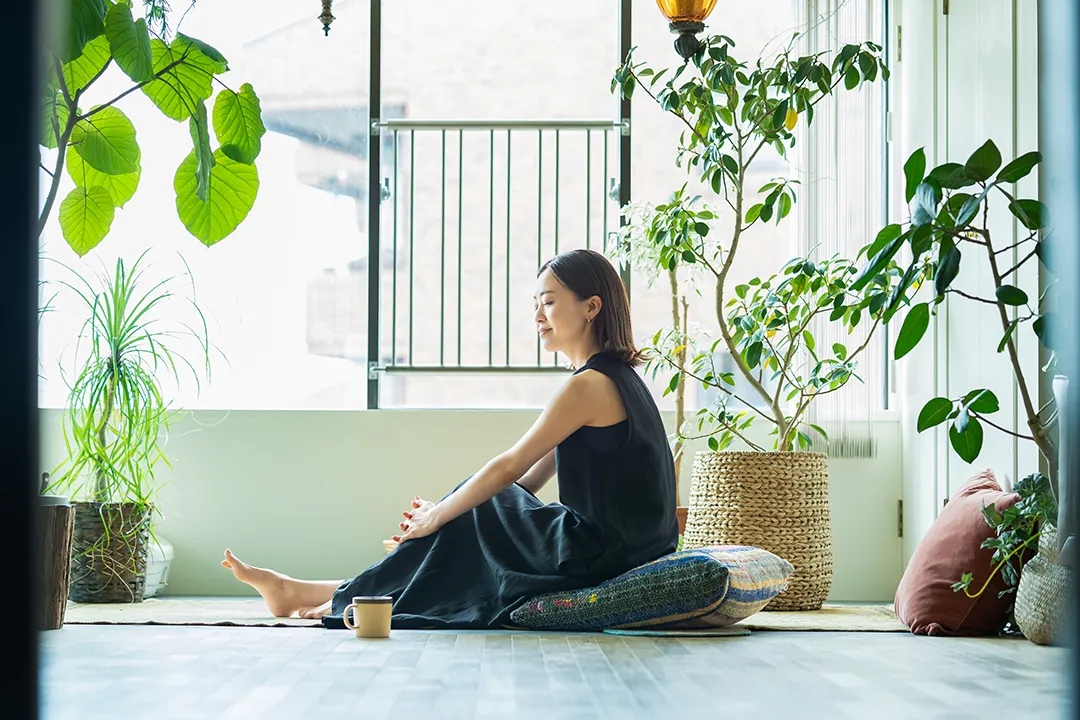
In our busy lives, finding a moment of peace can feel like a challenge. What if you could cultivate calm right in your own home or office? Backed by scientific research, interacting with indoor plants has been shown to lower stress hormones and improve mood, turning your space into a sanctuary of well-being. Here are the 12 best indoor plants for promoting stress relief, with special tips to help them thrive in our unique Arizona climate.
Why a Little Green Makes a Big Difference
The connection between plants and stress relief isn’t just a feeling; it’s science. A 2015 study found that simply potting a plant can significantly lower physiological stress. This is part of a concept called biophilia—our innate desire to connect with nature. Furthermore, legendary research like the NASA Clean Air Study proved that many common houseplants are powerhouses at removing toxins from the air we breathe, creating a physically and mentally healthier environment.
Our Top Picks for Calming Indoor Plants
A quick note for our fellow Arizonans: The key to happy houseplants here is managing humidity and light. The dry air from our climate (and our A/C) is the biggest challenge. We’ve included specific tips for each plant below!
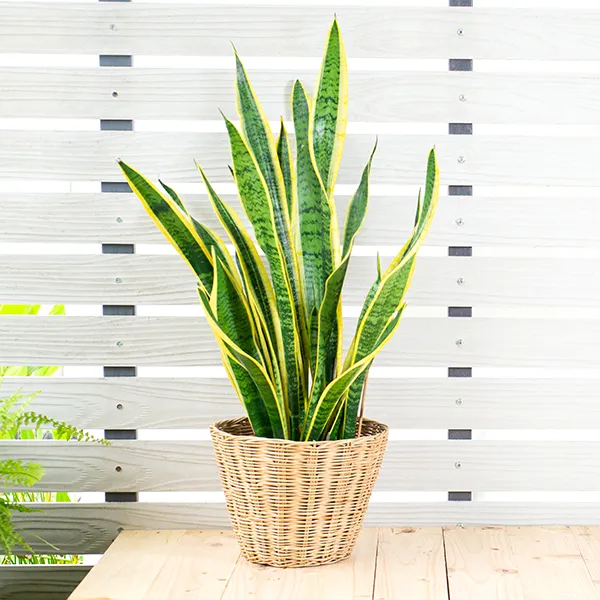
1. Snake Plant (Sansevieria trifasciata)
Often called the “unkillable” houseplant, the Snake Plant is a champion of air purification. It’s one of the few plants that releases oxygen at night, making it ideal for a bedroom. Its resilience means you get the calming green aesthetic without any added stress.
- Arizona Care Tip: Snake Plants are perfect for our climate. They tolerate low humidity well and should only be watered when the soil is 100% dry to the touch. Keep them out of direct, intense afternoon sun from a west-facing window.
- Pet Safe: No, it is toxic to cats and dogs if ingested.
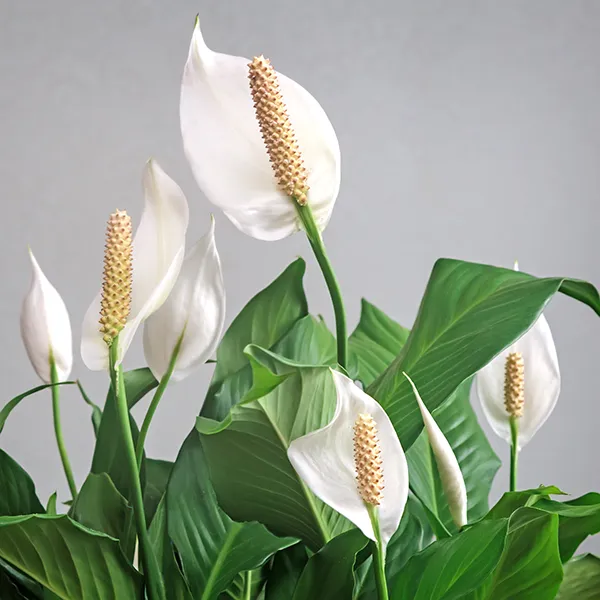
2. Peace Lily (Spathiphyllum)
With its elegant white blooms and deep green leaves, the Peace Lily is a natural air purifier that excels at breaking down harmful indoor gases. Its visual cues are also a great lesson in mindfulness—it will droop dramatically when it needs water and perk up quickly once refreshed.
- Arizona Care Tip: Peace Lilies love humidity. Group it with other plants, place it on a pebble tray with water, or use a small humidifier nearby. It will tell you when our dry air is too much by developing brown leaf tips.
- Pet Safe: No, it is toxic to both cats and dogs.
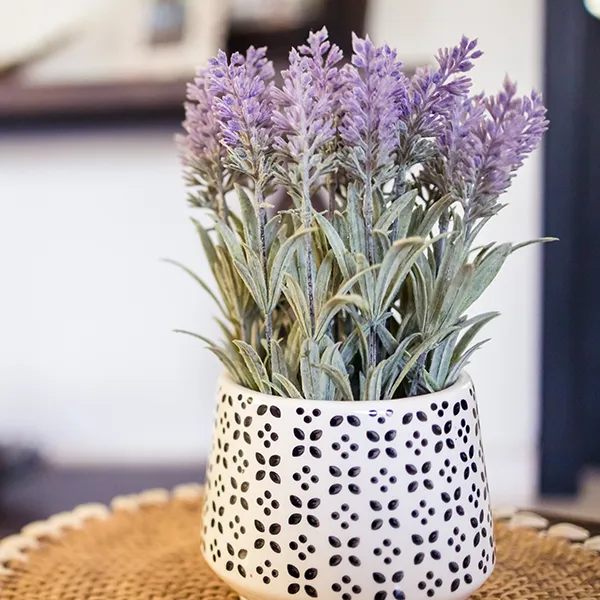
3. Lavender (Lavandula)
For centuries, the scent of lavender has been used to calm nerves and improve sleep. Keeping a small lavender plant on a sunny windowsill brings that natural aromatherapy right into your home, helping to ease anxiety.
- Arizona Care Tip: Lavender needs a lot of sun—at least 6-8 hours a day. An east-facing window is perfect for getting the bright morning light without the harsh afternoon scorch. It prefers to stay on the drier side, so let the soil dry out between waterings.
- Pet Safe: Yes, Lavender is non-toxic to cats and dogs.
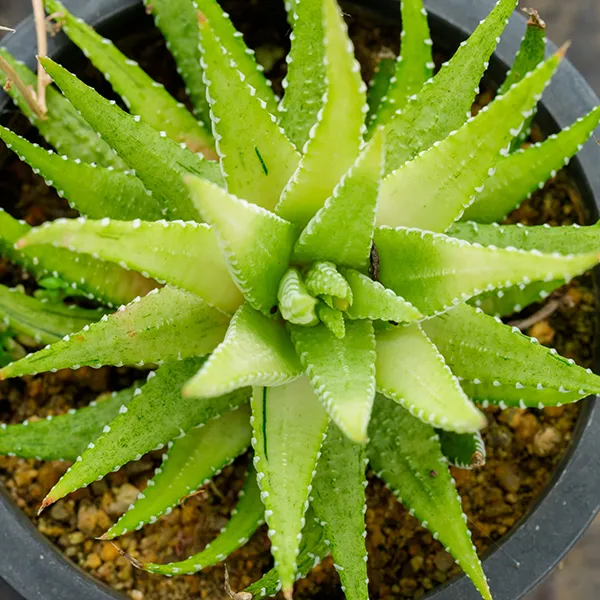
4. Aloe Vera (Aloe barbadensis miller)
Not only is Aloe Vera an easy-to-care-for succulent, but its gel has incredible skin-soothing properties. The act of caring for a plant that can, in turn, care for you creates a powerful, stress-relieving connection. It’s also an excellent air purifier.
- Arizona Care Tip: As a desert native (though not from Arizona!), Aloe Vera loves bright, indirect light and hates to have “wet feet.” Use a cactus/succulent soil mix and water deeply but infrequently.
- Pet Safe: Mildly toxic to pets. It can cause stomach upset if ingested.
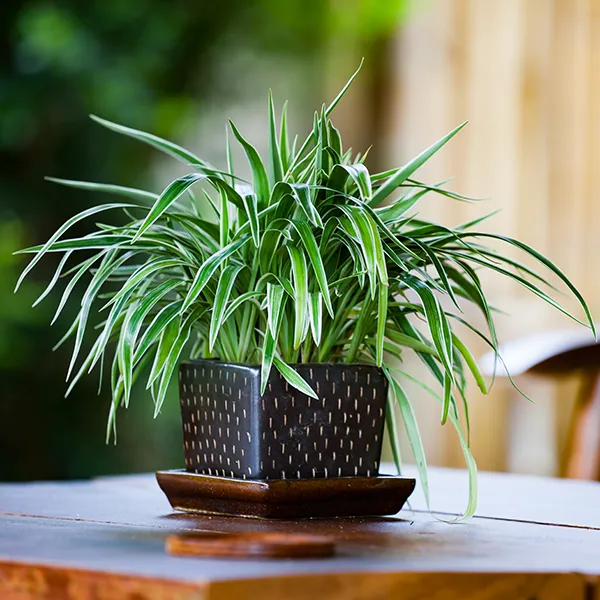
5. Spider Plant (Chlorophytum comosum)
The cheerful, cascading Spider Plant is incredibly forgiving and one of the easiest plants to propagate, making it fun to share with friends. It’s another top performer from NASA’s Clean Air study and is known for its mood-boosting presence.
- Arizona Care Tip: Spider Plants are great for our area. They prefer their soil to be kept lightly moist. Brown tips on the leaves are a common sign that the air is too dry; they will appreciate a little extra humidity from occasional misting.
- Pet Safe: Yes, it is non-toxic and safe for all pets.
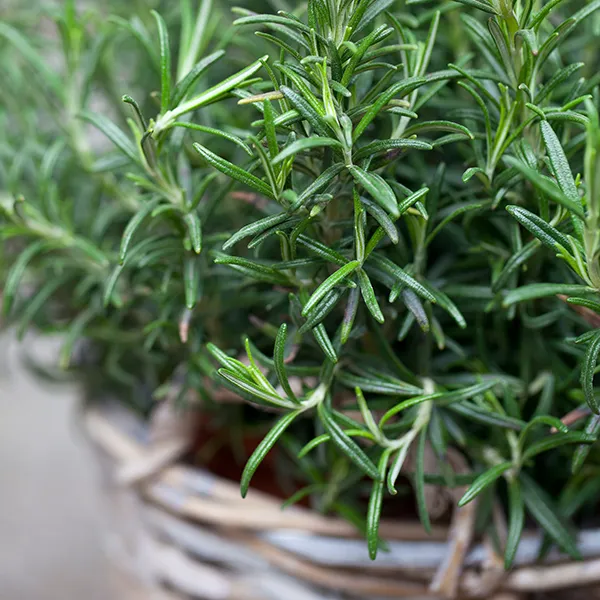
6. Rosemary (Salvia rosmarinus)
The invigorating, woody scent of rosemary has been linked to improved memory and alertness. Having this culinary herb nearby can help you focus and may lower levels of the stress hormone cortisol in your blood.
- Arizona Care Tip: Similar to lavender, rosemary needs a lot of direct sun. A south-facing window is ideal. It’s a Mediterranean native, so it’s quite tolerant of dry conditions. Water thoroughly when the topsoil feels dry.
- Pet Safe: Yes, it is non-toxic to pets.
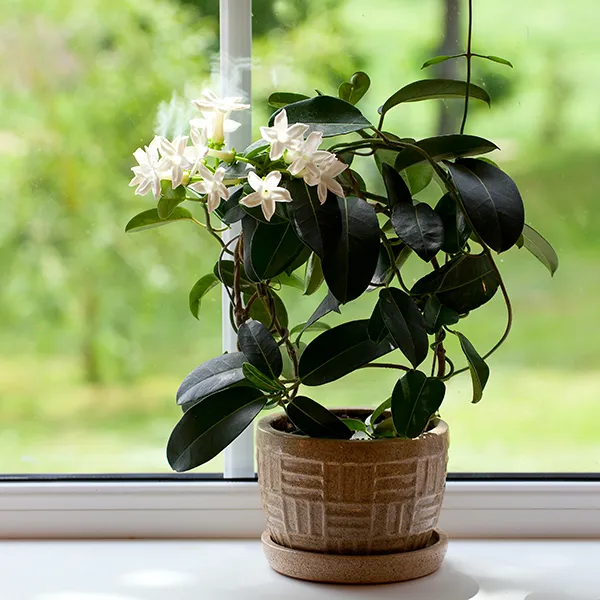
7. Jasmine (Jasminum polyanthum)
The sweet, delicate fragrance of jasmine flowers is renowned for its calming, anxiety-reducing properties, especially in the evening. Its beautiful vining nature adds a touch of tranquil elegance to any room.
- Arizona Care Tip: Jasmine can be a bit more challenging indoors here. It needs bright, indirect light and consistent humidity. Place it near a humidifier or on a pebble tray and keep the soil evenly moist but not soggy.
- Pet Safe: Yes, this common variety of Jasmine is non-toxic to pets.
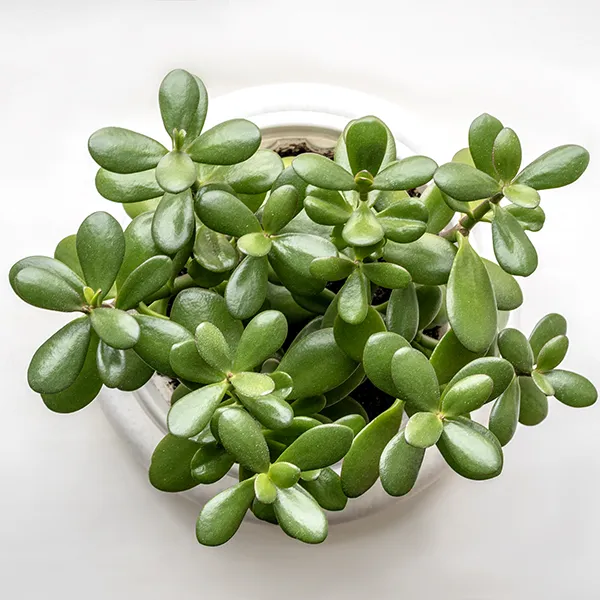
8. Jade Plant (Crassula ovata)
This classic succulent with its sturdy, wood-like stems and glossy leaves is a symbol of good luck. Jade Plants are incredibly long-lived and low-maintenance, providing a stable, grounding presence in your home.
- Arizona Care Tip: Jade Plants are a perfect match for our indoor environment. Give them a spot with bright, indirect light and water only when the top inch of soil is dry. They are very susceptible to root rot if overwatered.
- Pet Safe: No, it is toxic to cats and dogs.
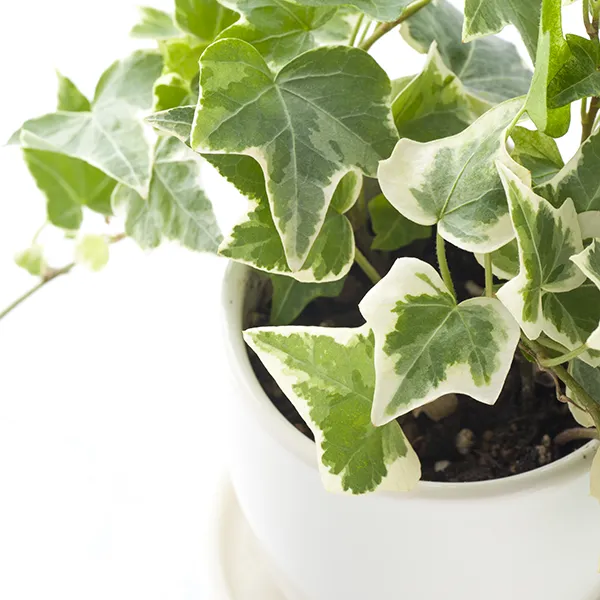
9. English Ivy (Hedera helix)
A beautiful trailing vine that excels at filtering airborne toxins like formaldehyde, making it one of NASA’s top air-purifying plants. Watching its vines grow can be a rewarding and calming experience.
- Arizona Care Tip: English Ivy is the one plant on this list that will struggle the most with our low humidity. It is prone to spider mites when stressed by dry air. It needs regular misting and a spot away from dry drafts (like A/C vents).
- Pet Safe: No, its leaves are toxic to pets and humans if ingested.
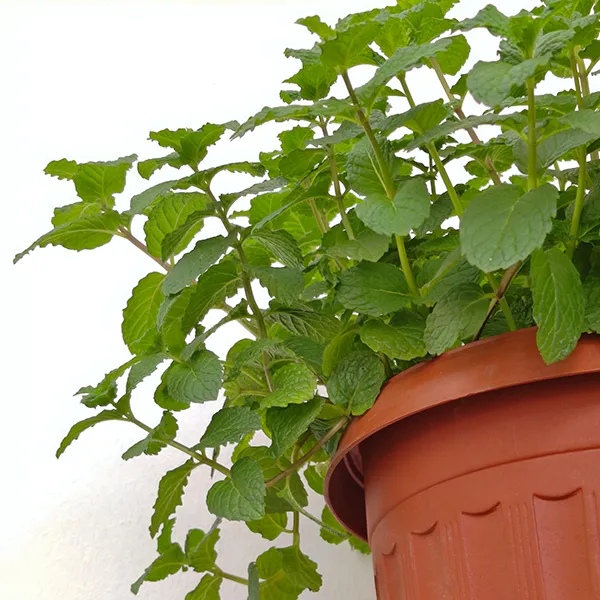
10. Peppermint (Mentha piperita)
The bright, refreshing scent of peppermint can help soothe frustration and boost focus. Just rubbing a leaf between your fingers releases an energizing aroma. It’s easy to grow and provides fresh leaves for tea or cooking.
- Arizona Care Tip: Peppermint likes consistently moist soil and bright, indirect light. It can be a thirsty plant, so check it regularly. It’s a great candidate for a self-watering pot.
- Pet Safe: Yes, it is non-toxic to pets.
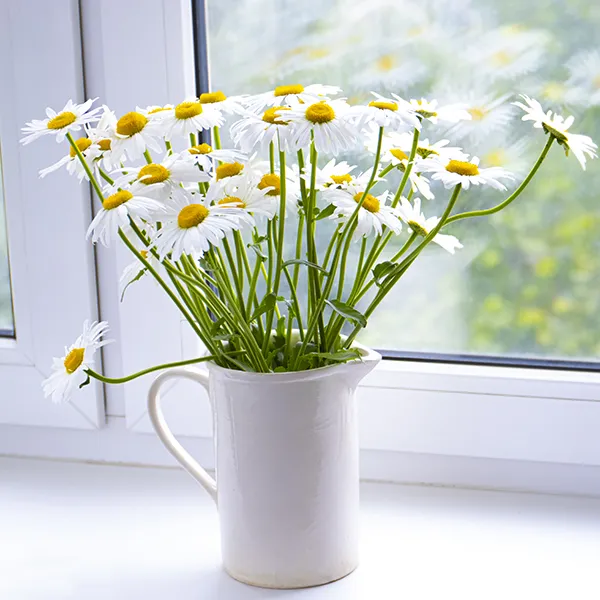
11. Chamomile (Matricaria recutita)
Known for its use in calming teas, the German Chamomile plant itself is a delight. Its small, daisy-like flowers are cheerful, and the plant releases a light, apple-like fragrance that promotes relaxation.
- Arizona Care Tip: Give your chamomile plant a spot with plenty of direct sunlight. It prefers to stay on the drier side, so let the soil dry out between waterings. It can be grown easily from seed on a sunny windowsill.
- Pet Safe: Yes, it is non-toxic to pets.

12. Chrysanthemum (Chrysanthemum morifolium)
Referred to as “mums,” these bright, colorful flowers can provide a powerful, temporary mood boost. They are also workhorses of air purification, proven by NASA to remove common toxins like ammonia and benzene from the air.
- Arizona Care Tip: Mums are best treated as a temporary, flowering houseplant. Keep them in bright, indirect light and keep the soil consistently moist to prolong the blooms. They won’t typically re-bloom indoors.
- Pet Safe: No, they are toxic to cats, dogs, and horses.
Frequently Asked Questions (FAQ)
Which plant is best for anxiety?
Lavender is widely known for its calming scent which can help reduce anxiety. However, any plant that you enjoy caring for can be beneficial. As a 2015 study in the Journal of Physiological Anthropology showed, the act of caring for plants is itself a powerful stress-reducer.
What are the easiest calming plants to keep alive in Arizona?
The Snake Plant, Jade Plant, and Aloe Vera are your best bets. They are extremely drought-tolerant and handle low humidity better than most, making them perfectly suited for a low-stress plant ownership experience in the desert.
Where should I place plants for stress relief?
Place them where you’ll see them often! A small plant on your office desk, a calming Snake Plant in the bedroom, or a group of plants in your main living area can create a “green oasis” that helps you de-stress throughout the day.
Your Partner in Creating Healthier Spaces
Choosing to bring a plant into your personal space is an act of wellness. When you’re ready to bring that same feeling to your entire workplace, we’re here to help. A well-designed space is a healthier, happier, and more productive one.
Ready to Transform Your Space with Biophilic Design?
Feeling inspired? While caring for a few plants at home is a great start, transforming an entire office, lobby, or commercial space with the principles of biophilic design is what we do best. The team at Plant Solutions are experts in designing, installing, and maintaining beautiful, stress-reducing plantscapes that boost well-being and productivity.
